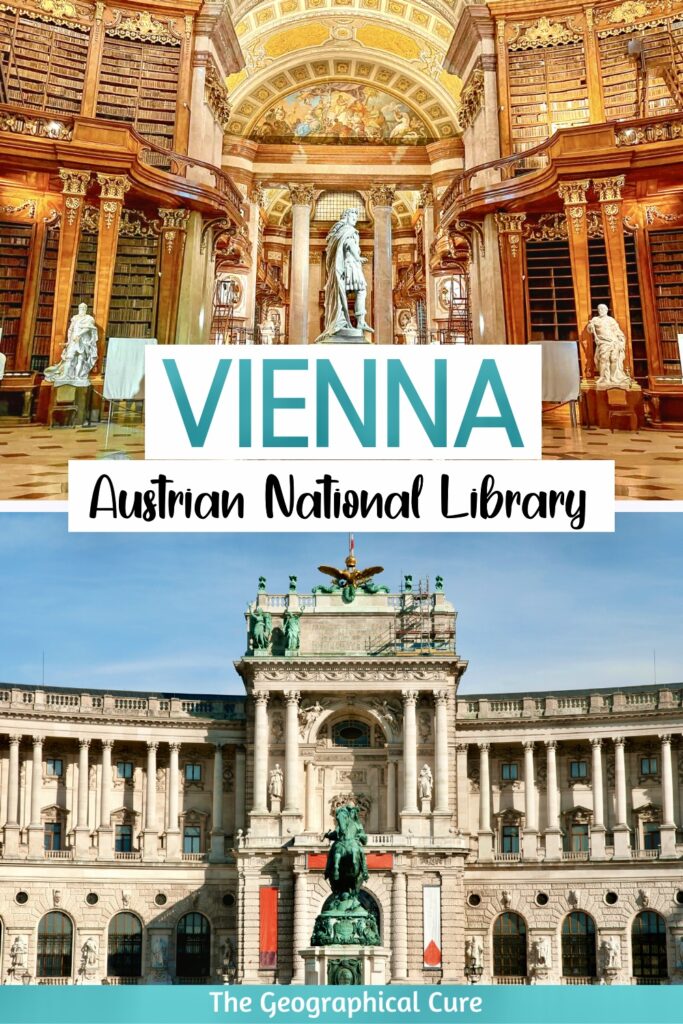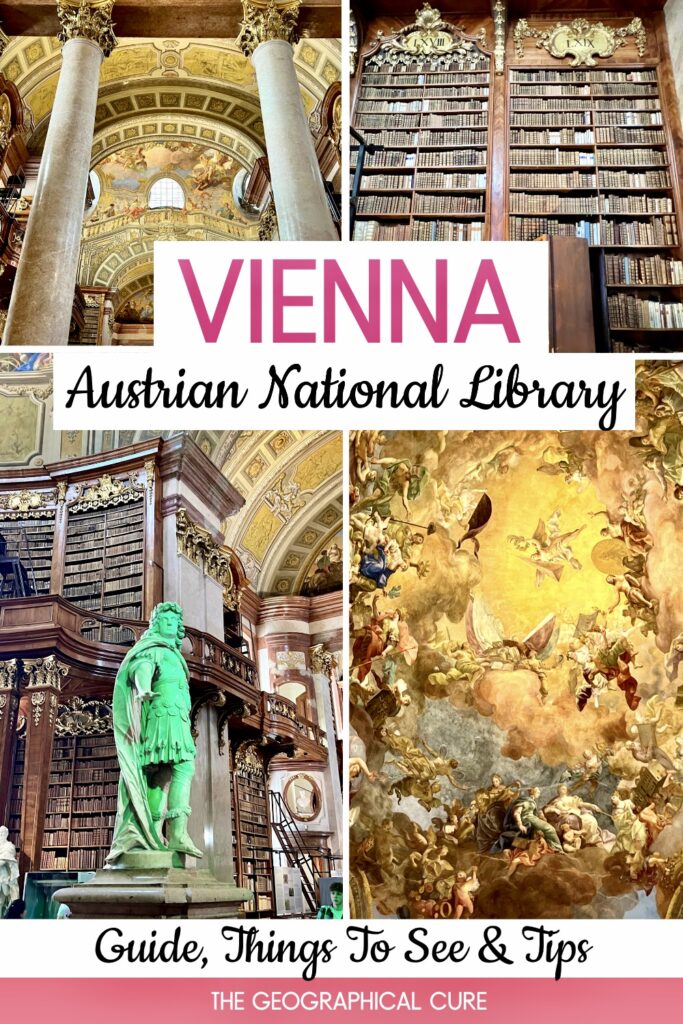The Austrian National Library is an absolute must visit in Vienna. It’s simply gorgeous, one of the Hapsburg’s most opulent confections and one of the world’s most beautiful libraries.
Emperor Charles VI founded the library, the Österreichische Nationalbibliothek, in the 1739s. It used to be the court library, but is now a museum.
In both its function and style, the library is a monument to the ideas of the European Enlightenment. It’s a secular cathedral dedicated to the advancement of human knowledge. When it opened, the emperor decreed that anyone could visit, even “ignoramuses and gawkers.”
The building was designed in 1732 by Johann Fischer von Erlach, the mastermind behind Schönbrunn Palace.
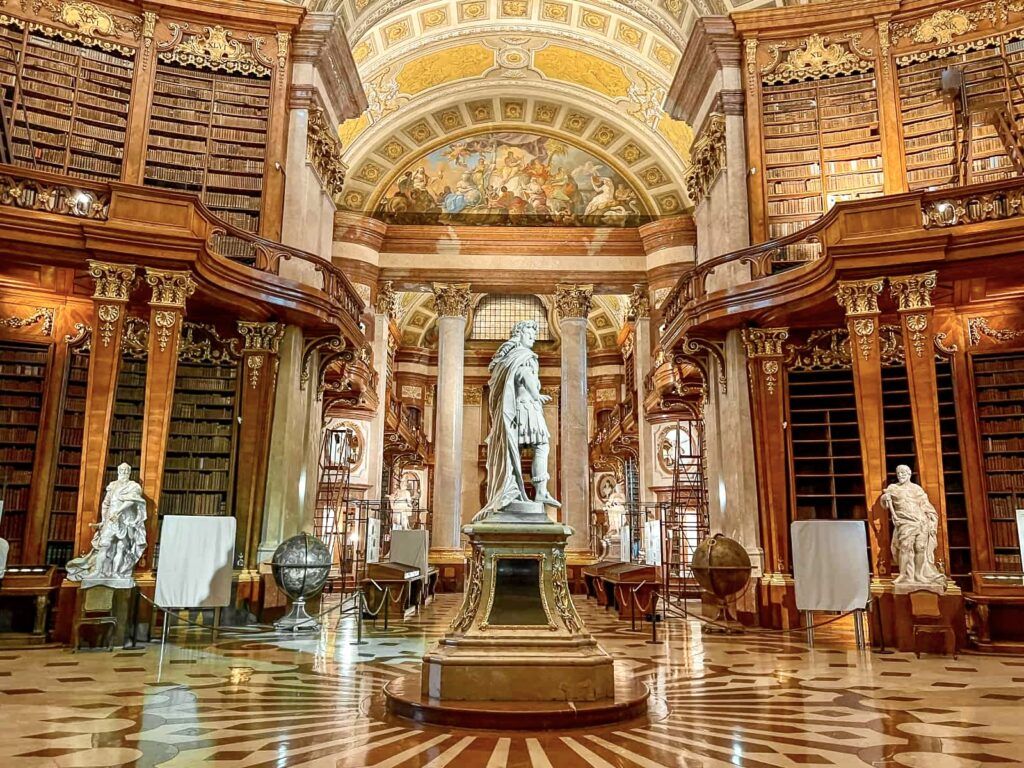
By the standards of Viennese Baroque, the exterior facade is rather restrained. “Restrained,” however is not a word that anyone would use to the describe the building’s spectacular interior.
The core of the collection is held in the jaw dropping Prunksall, State Hall. But the collection has expanded over time and into other buildings and associated specialty smuseums.
This is what you can see in the Austrian National Library complex:
- State Hall
- Augustinian Reading Room
- Literature Museum
- Papyrus Museum
- Esperanto Museum
- Globe Museum
Most people just visit the State Hall. But the special collections are worth a look too, depending on your personal interests.
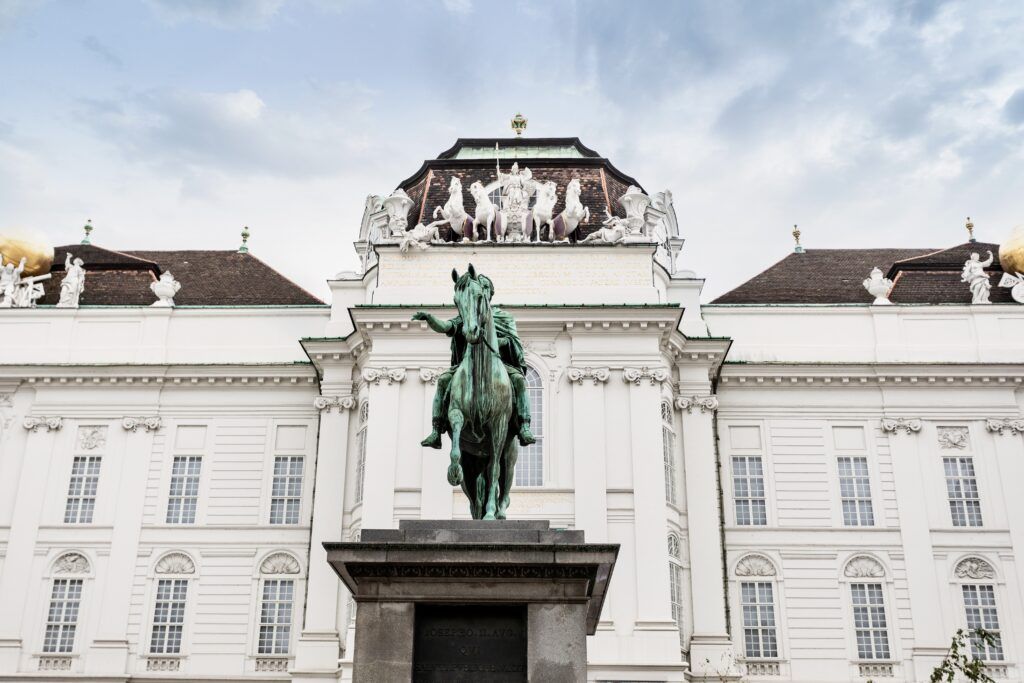
Guide To The Austrian National Library: What To See
Facade
The facade is restrained, but lovely. 14 Ionic columns are aligned on the ground floor.
There are three grand entrances. You’ll enter through the central entrance.
At the top is a statuary group by Lorenzo Mattielli. It shows the goddess Minerva (Athena) with a quadriga or horses. They are shown triumphing over the fallen figures of Envy and Ignorance.
State Hall
The State Hall is one of the world’s most beautiful historic libraries. Emperor Charles VI ordered the construction of this Baroque jewel to be his court library.
The library is approximately 250 feet long and 80 feet wide. It’s a three part structure with an entrance wing and two side wings.
This marvel of Baroque architecture is a symphony of marble floors, gold gilded decor, stucco reliefs, vibrant frescoes, and ornate statues.
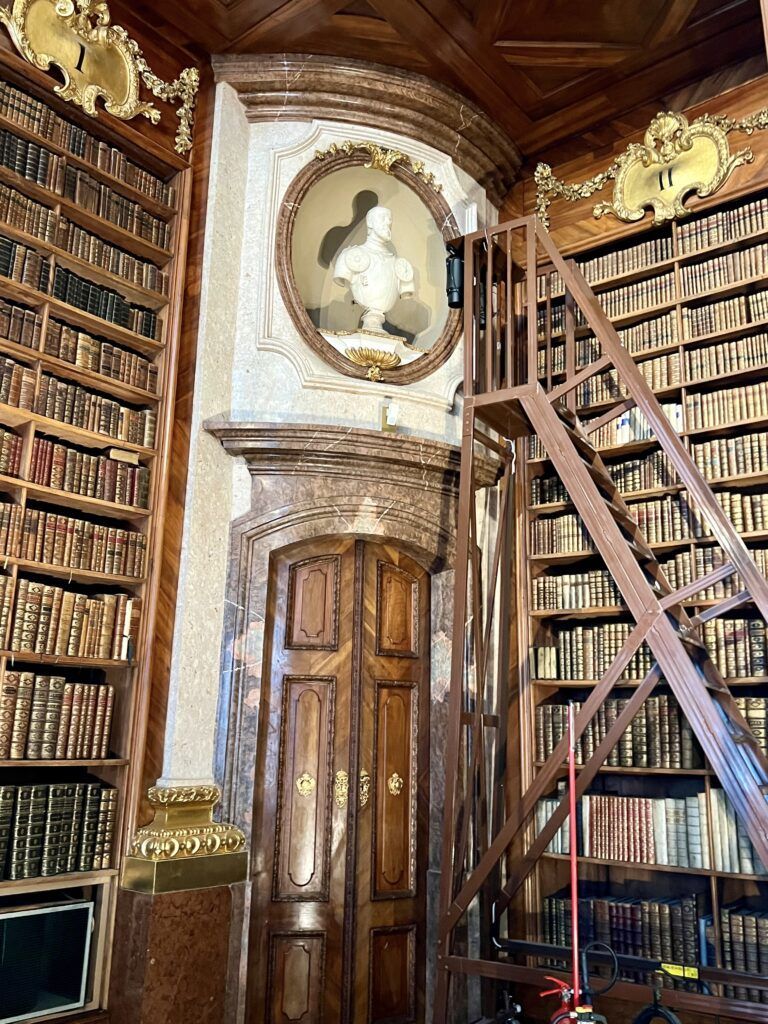
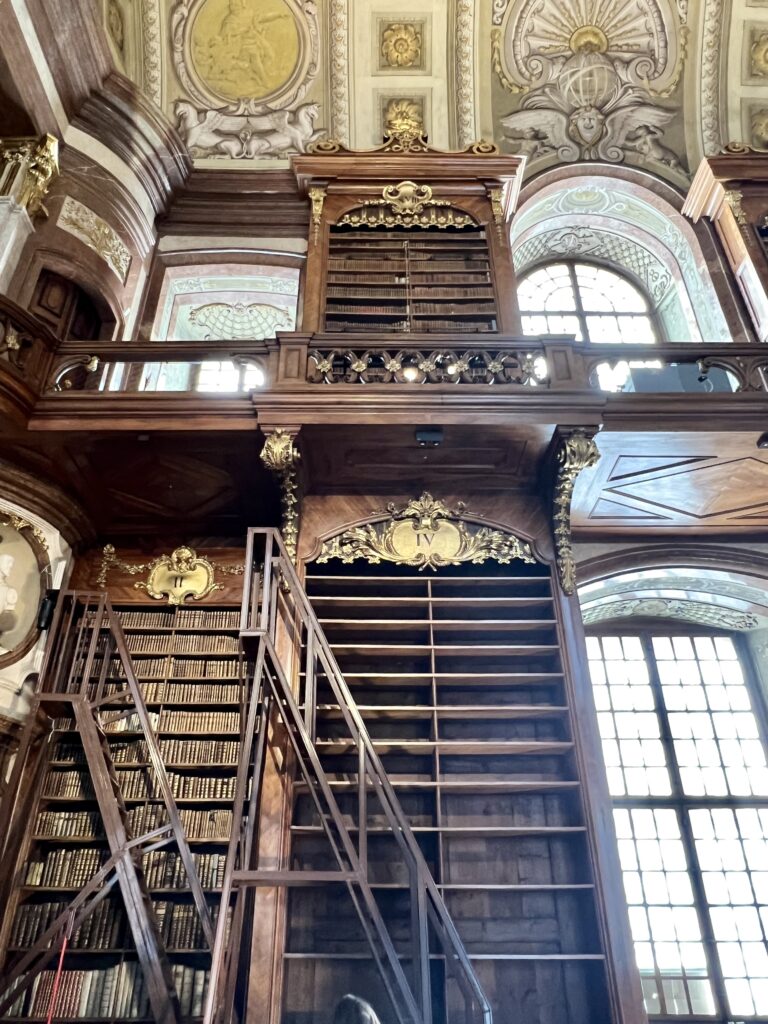
Books
The State Hall holds over 200,00 books from 1501 to 1850.
Among them is the 15,000 volume collection of Prince Eugene of Savoy, the statesman who built the Belvedere Palace. The books are bound in Moroccan leather and embossed in gold.
The library’s other treasures are the Holy Gospels, commissioned by Duke Albrecht III in 1368.
Other notable highlights include significant works such as the Vienna Dioscurides, Theatrum Orbis Terrarum, the Wenceslas Bible, and Harmonia Macrocosmica.
Many of the books from the medieval and Renaissance periods are illuminated manuscripts, some of which are shown off in display cases. These contain a variety of illustrations, decorative designs, and embellishments.
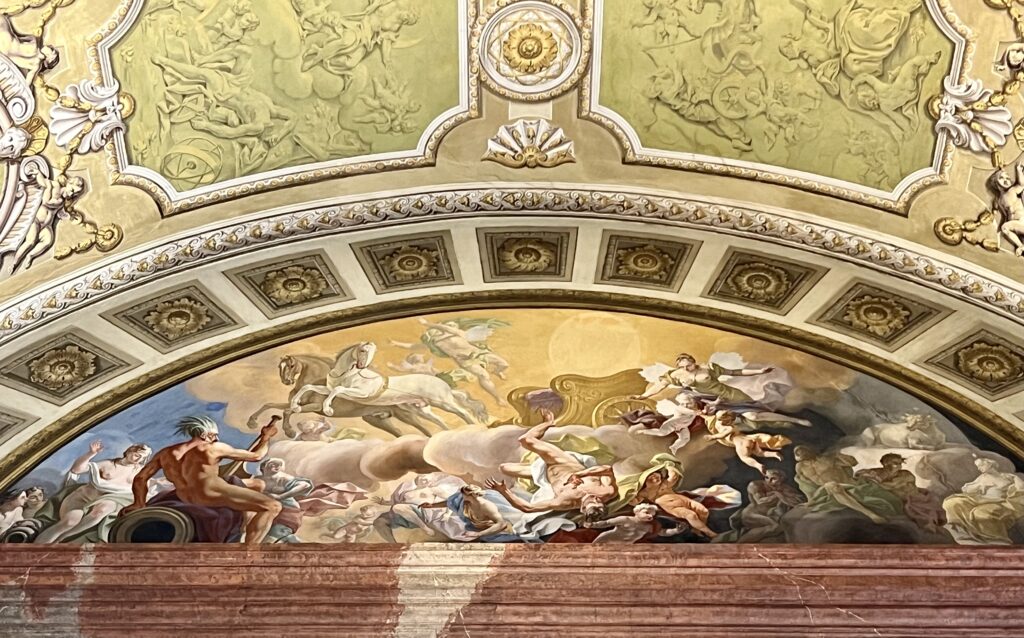
Frescos
There are stunning trompe l’oeil frescos in each wing.
The lunette fresco in the entrance hall depict secular topics and war themes.
It shows the figure of Cadmus, who was commanded by Minerva, the goddess of war, to sow the earth with the teeth of a slain dragon. From the “seeds,” warriors sprang forth.
Legend holds that it was Cadmus who gave humankind the alphabet.
The frescos in the Peace Hall show allegories of heaven and peace. They depicts Apollo and Aurora driving out demons of the night.
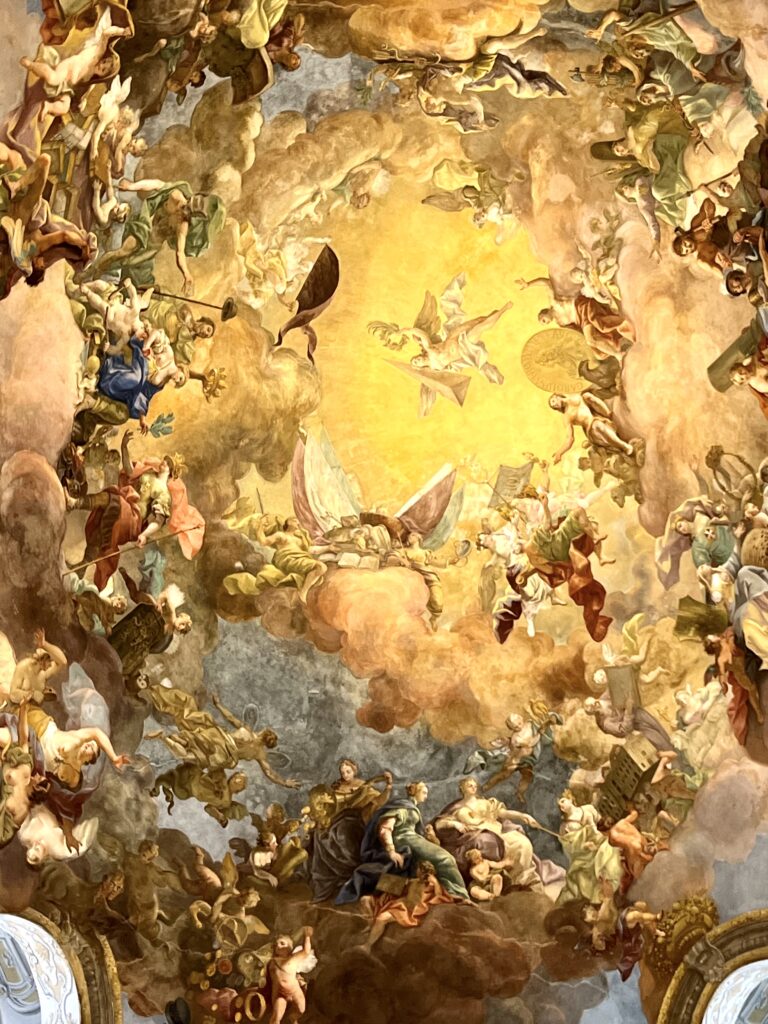
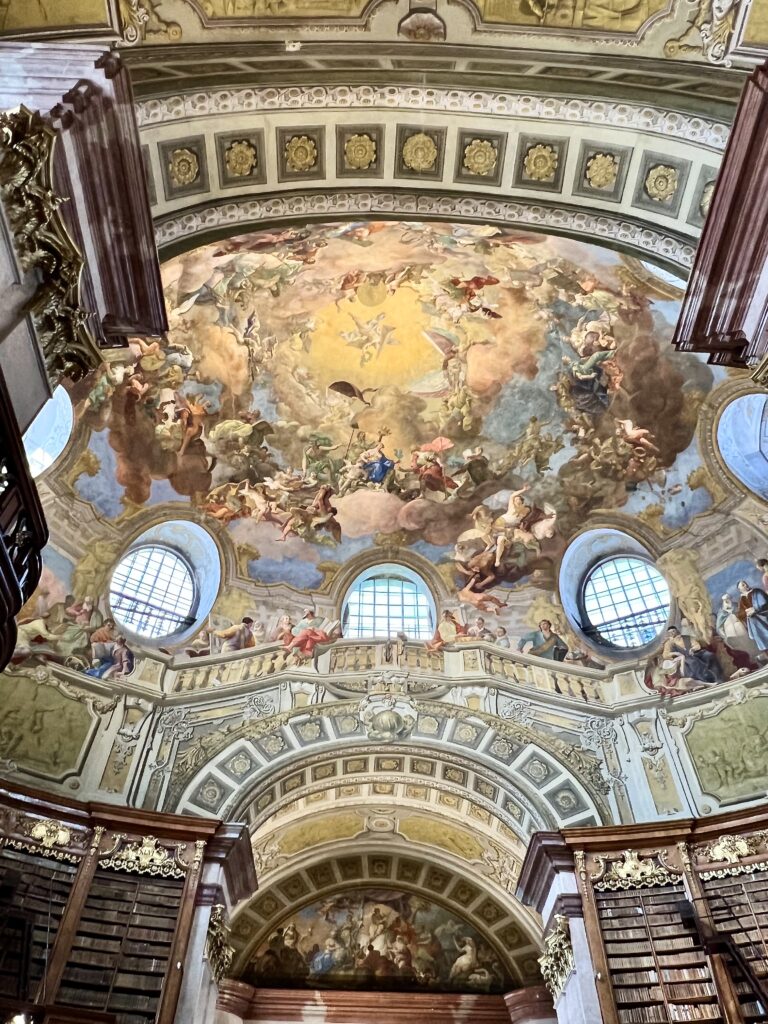
But their real stunner is the illusionistic fresco in the oval cupola.
Painted by court artist Daniel Gran from 726 to 1730, it depicts the apotheosis, or divinization, of Charles VI.
The central theme is an homage to the Habsburg dynasty and its role in fostering knowledge and the arts. It’s a reminder that Charles was ordained by god to lead the empire.
The fresco is full of allegories. A medallion of the emperor is held by Hercules and Apollo, who embody strength, wisdom, and courage, qualities that were attributed to Charles VI.
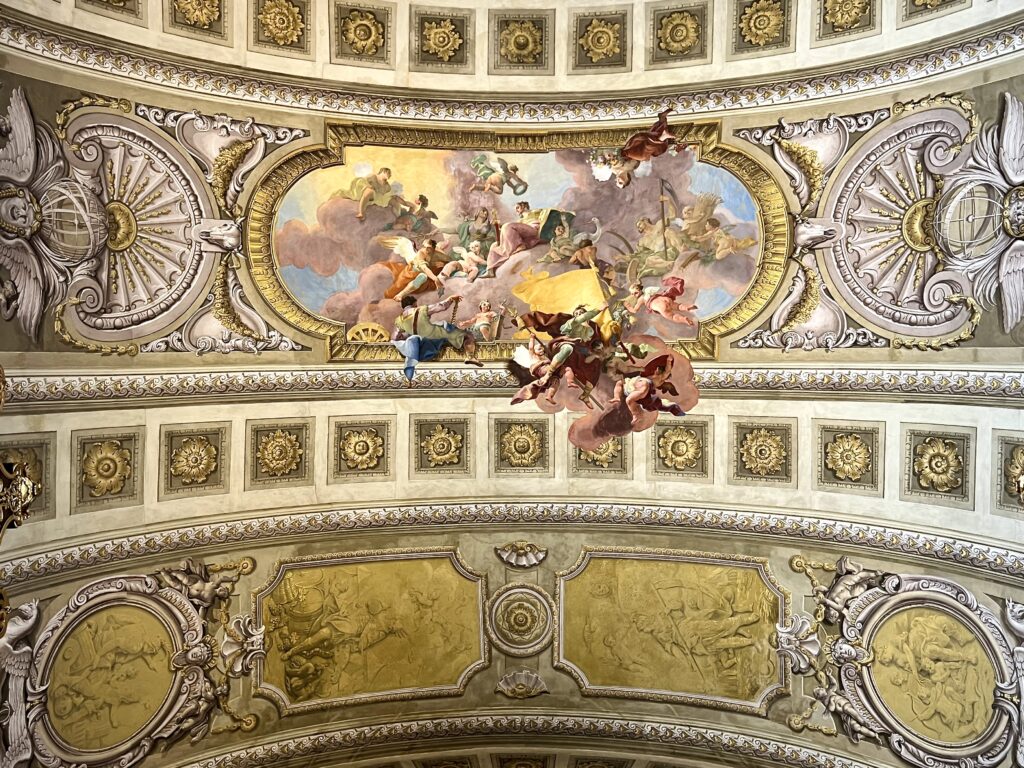
Hercules’ foot is strategically placed atop the three-headed hound, Cerberus, symbolizing Charles VI’s triumph in warfare. It was his victories that paved the way for the construction of the library.
Surrounding the emperor’s portrait are allegorical figures representing fame, glory, gratitude, steadfastness, magnanimity, and generosity. Notably, a figure embodying the emperor’s penchant for splendor is seen with a scepter.
Directly beneath this central decoration, Daniel Gran included a depiction of a “School of Athens,” showcasing representatives from various arts and sciences.
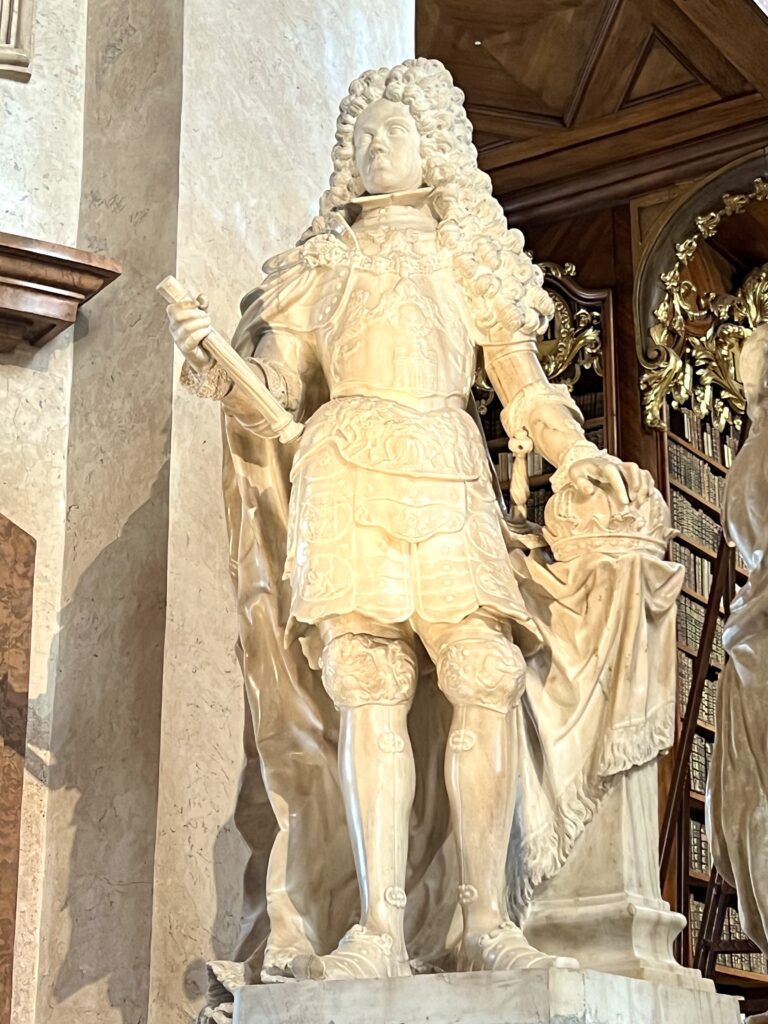
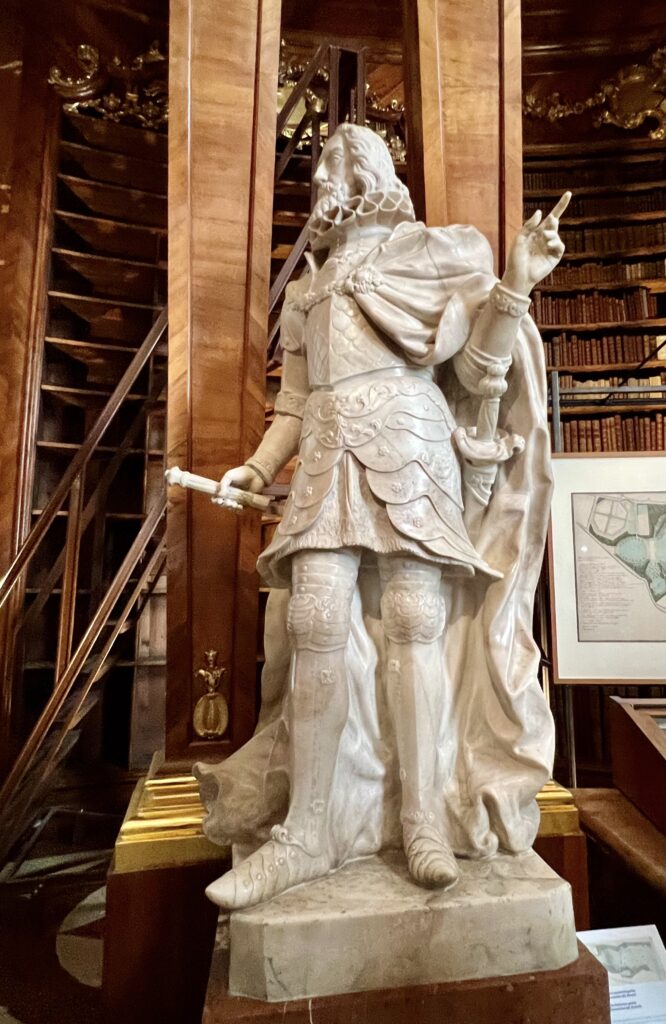
Sculptures
The State Hall is adorned with 16 sculptures, the work of notable artists of that era, including the Strudel brothers.
These pieces mainly feature characters from Greek and Roman mythology, and there’s a commanding statue of William Shakespeare.
Dominating the center of the hall is the striking statue of Charles VI, envisioned as Hercules Musarum. The imperial sculptor, Antonio Corradini, created it in 1735.
Surprisingly, the sculpture is bathed in a glaring green light, although it’s actually made of white marble. The choice of green lighting struck me as an unusual decision. It’s a tad garish.
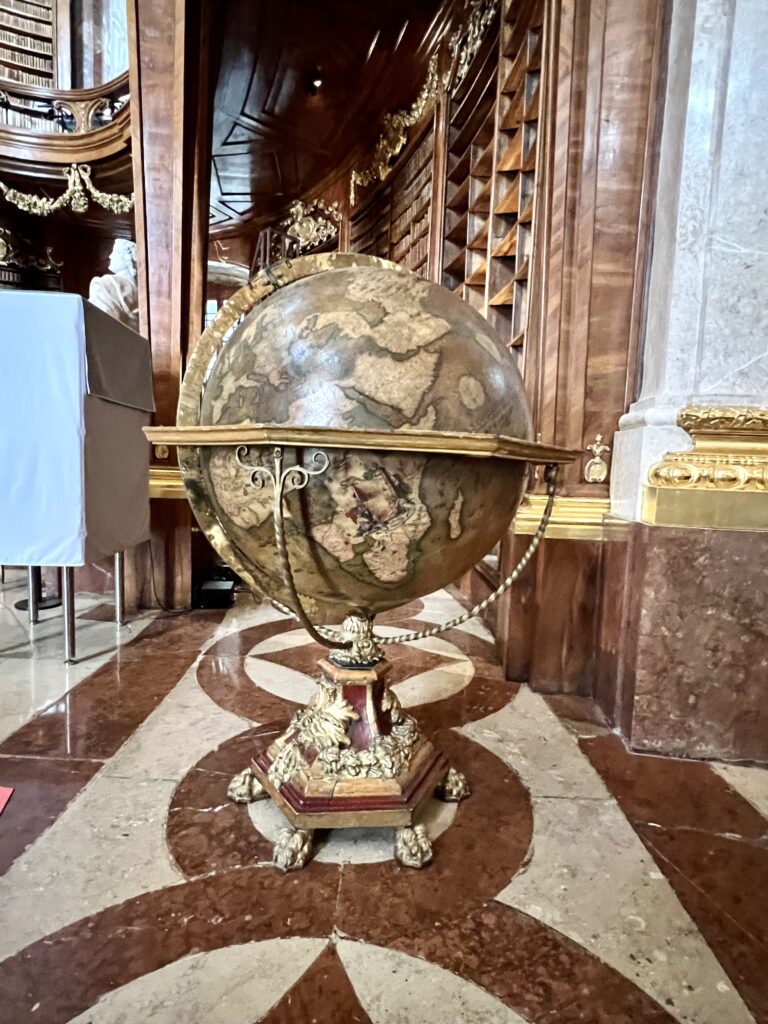
Globes
The State Hall also houses a notable collection of historic globes, including terrestrial and celestial globes. These globes are not only valuable as navigational and astronomical tools but also as works of art.
The most famous globes in the collection are those created by Vincenzo Coronelli, a renowned Italian globe-maker and cartographer of the 17th century.
The Coronelli globes are particularly prized for their size, intricate detailing, and historical value.
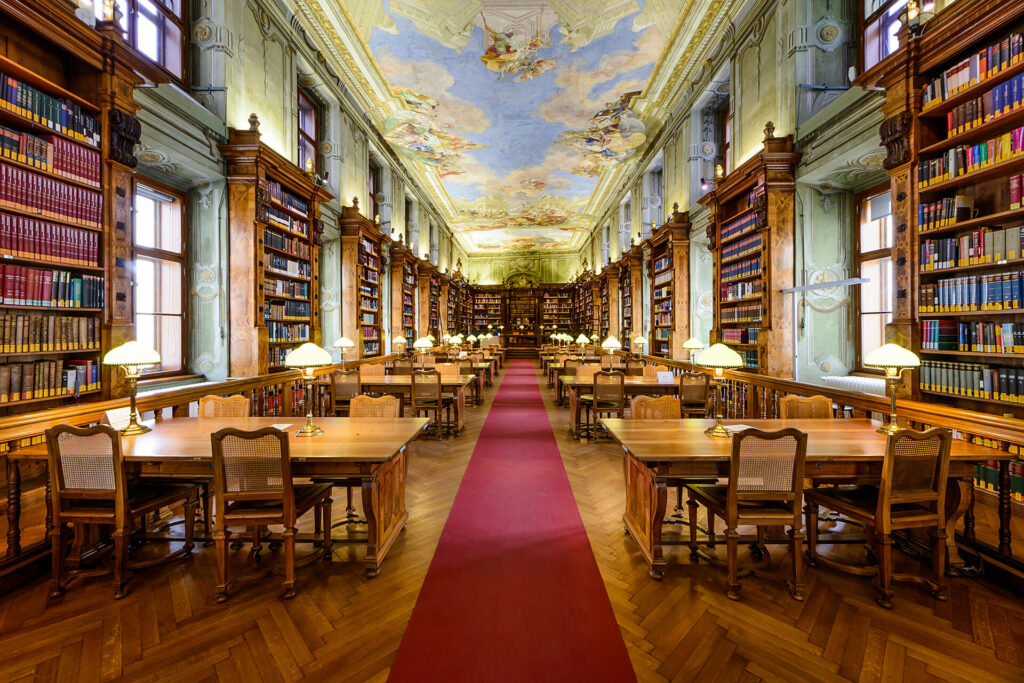
Augustinian Reading Room
The Augustinian Reading Room is a beautiful space steeped in history and elegance. Named after the neighboring Augustinian Church, this room exudes the Baroque ethos.
The reading room serves primarily as a reading and research area. It offers access to a wide array of the library’s extensive collection, including valuable books and manuscripts.
The room has a beautiful ceiling fresco by Johann Baptist Bergl. It’s serene and scholarly ambiance makes it a favorite for both academics and visitors.
Tip: You can only visit on a guided tour at 4:00 pm every second Wednesday of the month.
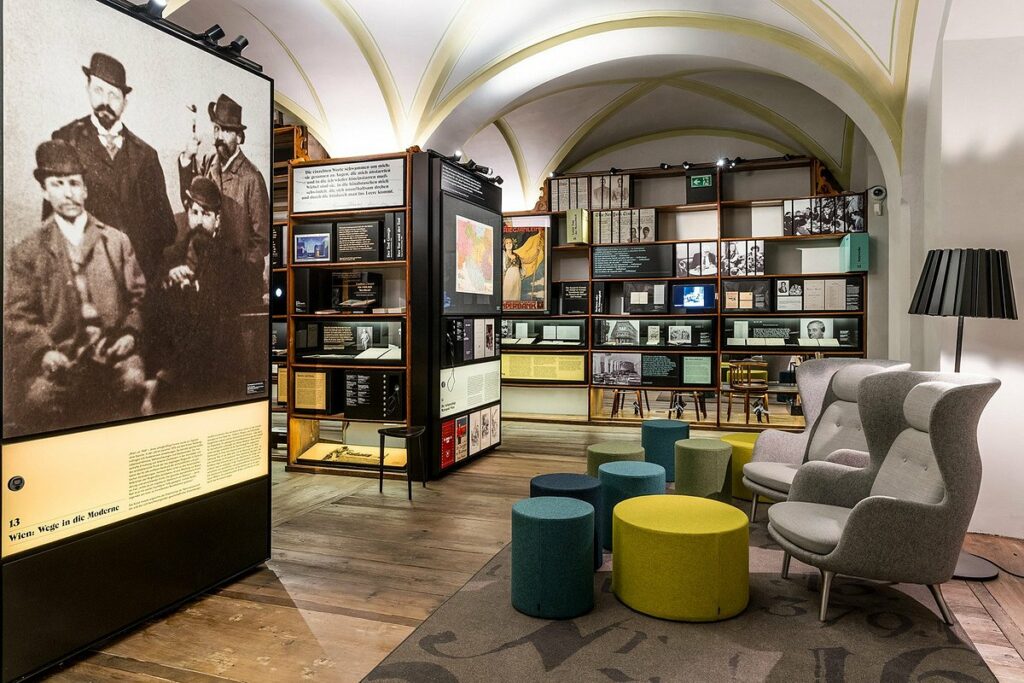
Associated Museums
The Literature Museum traces the history and diversity of Austrian literature from 1770 to present.
Over two floors, it houses a variety of exhibits, including manuscripts, rare books, personal letters, portraits, and other artifacts related to significant Austrian authors and literary movements.
Literature lovers will be enthralled. The museum is housed in the Grillparzerhaus, in central Vienna, at Johannesgasse 6.
The Papyrus Museum displays over 300 objects on papyri, parchment, and other paper. They cover the period from the 15th century BC to the 15th century AD.
The works from antiquity are the most valuable and provide insight into the everyday lives of citizens from long ago.
Some of the must sees include a mummy portrait from the 2nd century, Egyptian book of the dead from the 2nd century BC, and the passion story from Matthew’s gospel.
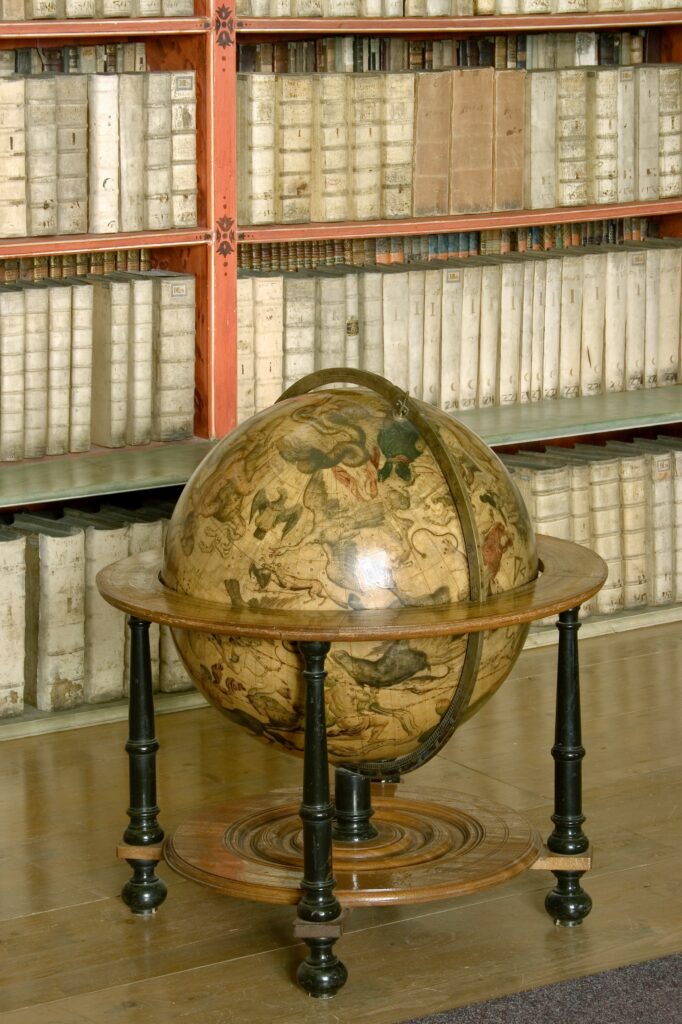
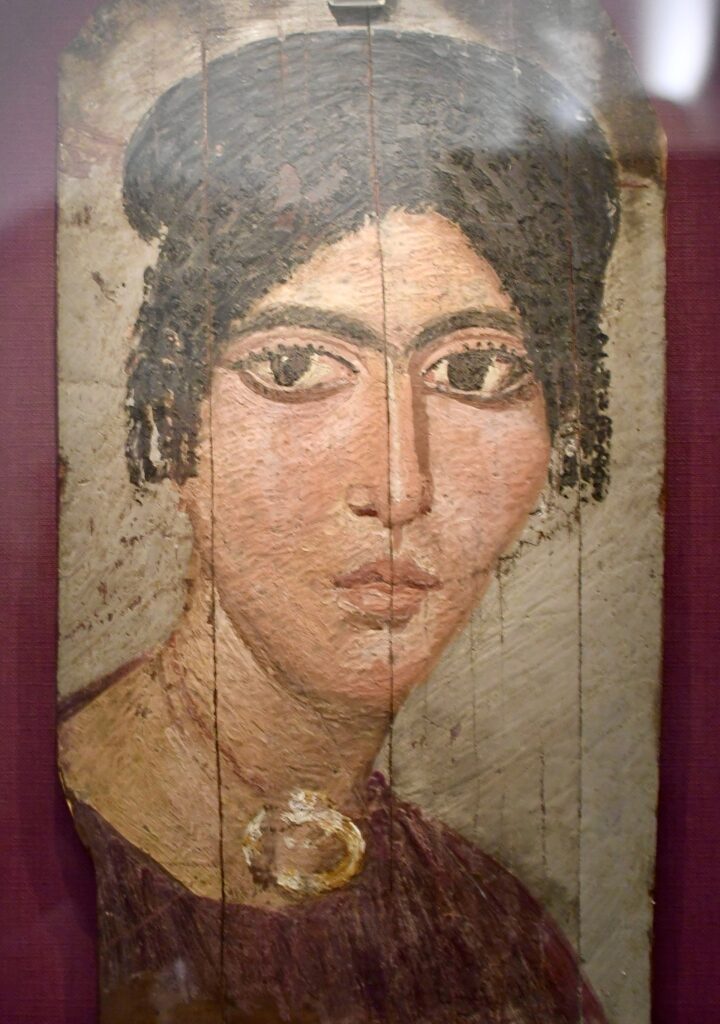
The Esperanto Museum is a unique institution dedicated to the international language Esperanto and the broader subject of planned languages.
It’s housed in the Palais Mollard-Clary, a Baroque palace at Herrengasse 9.
The Globe Museum is the only one of its kind in the world. It exclusively houses rare historic globes and instruments related to globes.
You’ll find terrestrial, celestial, lunar, and planetary globes. The most valuable are two terrestrial and celestial globes buy Gerardus Mercator dating from 1541 and 1551.
This museum is also housed in the Palais Mollard-Clary.
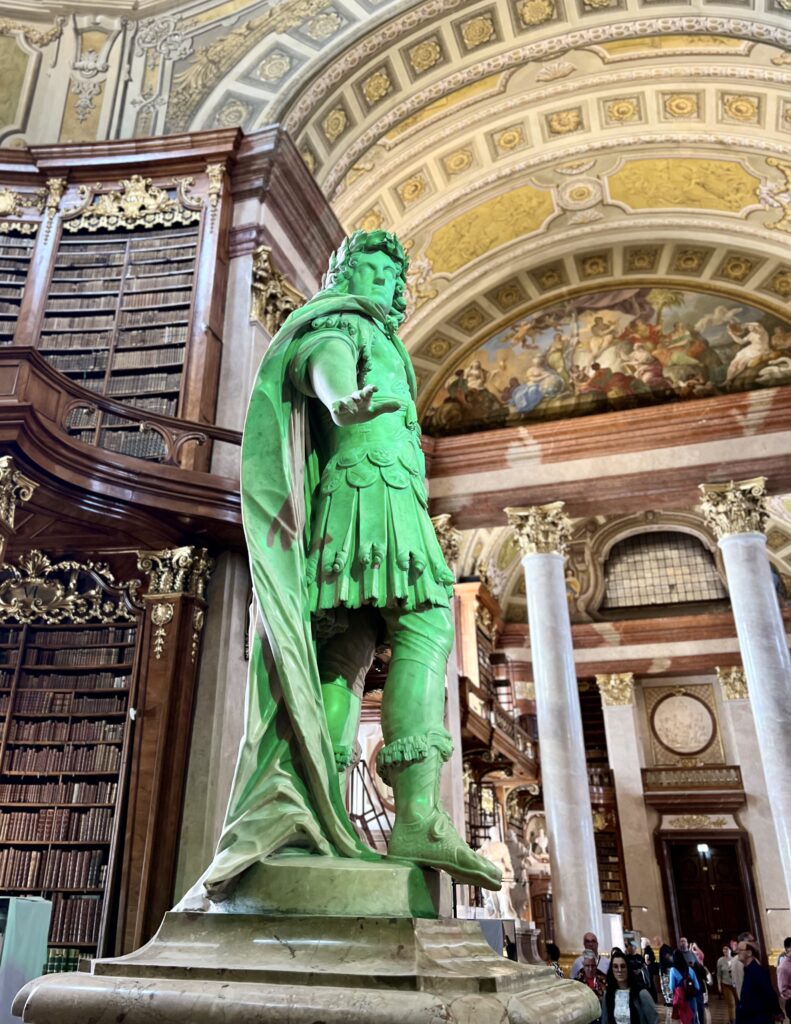
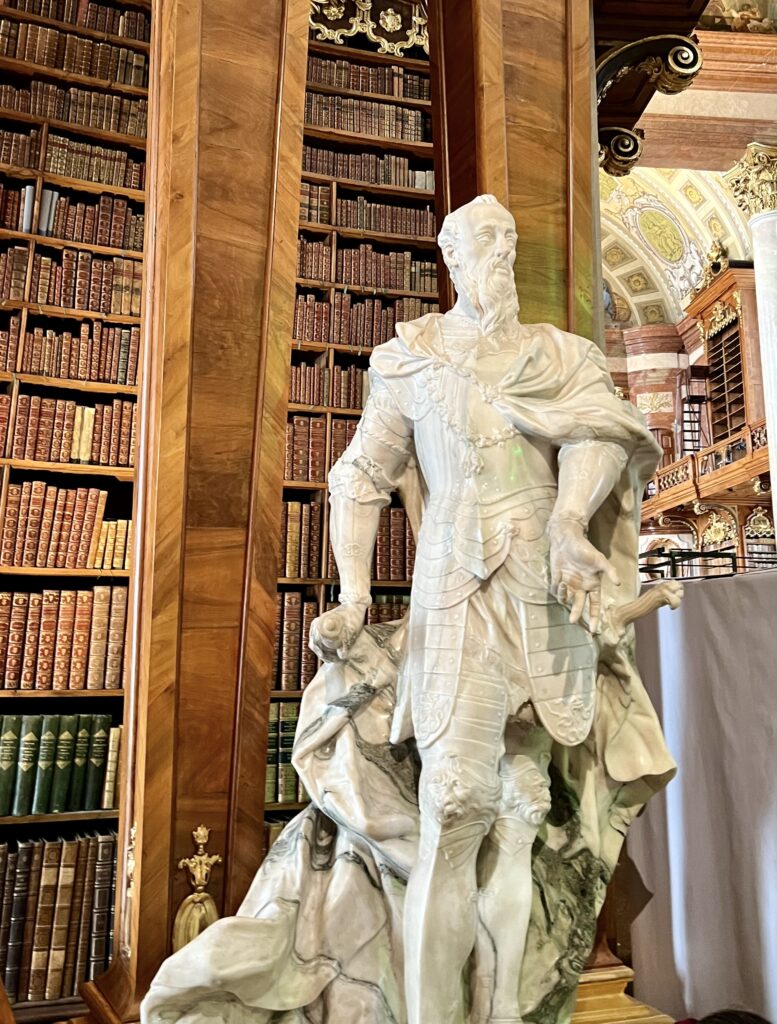
Practical Tips For The Austrian National Library
Address: Josefsplatz 1. It’s part of the is part of Neue Burg wing of the Hofburg Palace.
Hours: Open daily 10:00 am to 6:00 pm. Closed Mondays.
Tickets: 10 euros. The library is included in the Vienna Pass. I visited in October and was able to walk right in and buy a ticket without a wait.
Tours: There are 45 minutes guided tours of the State Hall in German on Thursday at 6:00 pm. and Sunday at 3:00 pm for 4.50 euros. You can also book private guided tours in English of the State Hall and museums through the official website.
Pro Tips: You cannot touch or read any of the books in the State Hall.
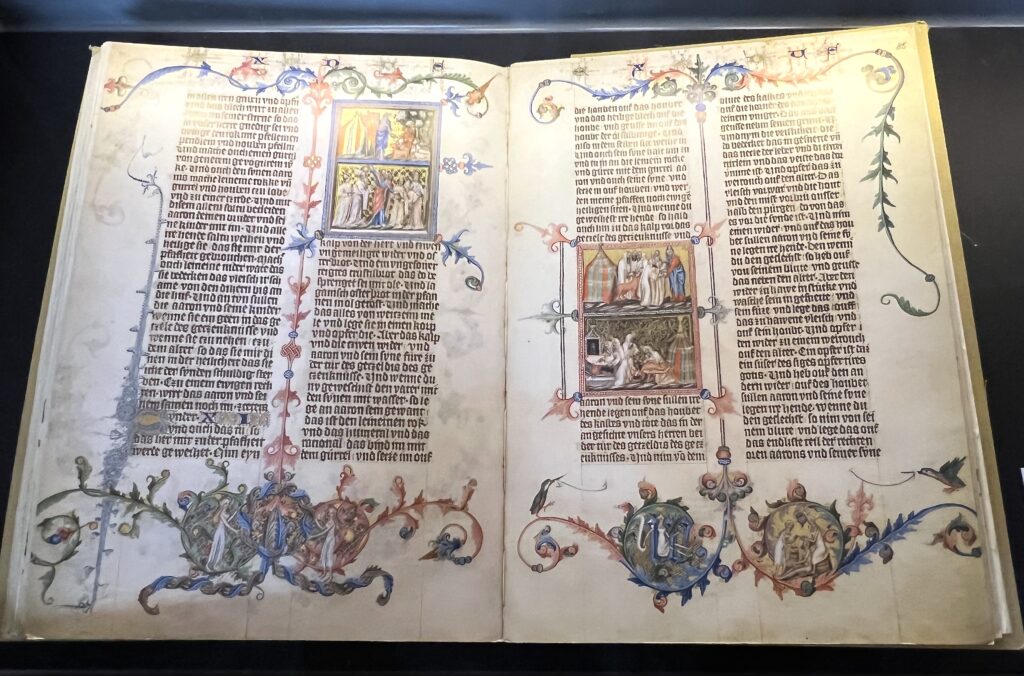
Because it’s so beautiful, the library has become popular on Instagram and Tik Tok.
For a quieter visit, go right at 10:00 am when it opens or at 5:00 pm close to closing. I would budget an hour or so for the State Hall, more if you’re visiting the museums.
There is also a modern library with seven reading rooms at Heldenplatz. You can visit and, if researching, take out a temporary library card.
I hope you’ve enjoyed my guide to the Austrian National Library. You may find these other Vienna travel guides useful:
- 1 Day in Vienna Itinerary
- 3 Days in Vienna Itinerary
- 4 Days in Viena Itinerary
- Best Museums in Vienna
- Tips for Visiting Vienna
- Salzburg day trip from Vienna
- Beautiful Churches in Vienna
- Beethoven Guide To Vienna
- Klimt Guide To Vienna
- Things To Do in Vienna in Winter
- What To Do in the Wachau Valley
Pin it for later.

